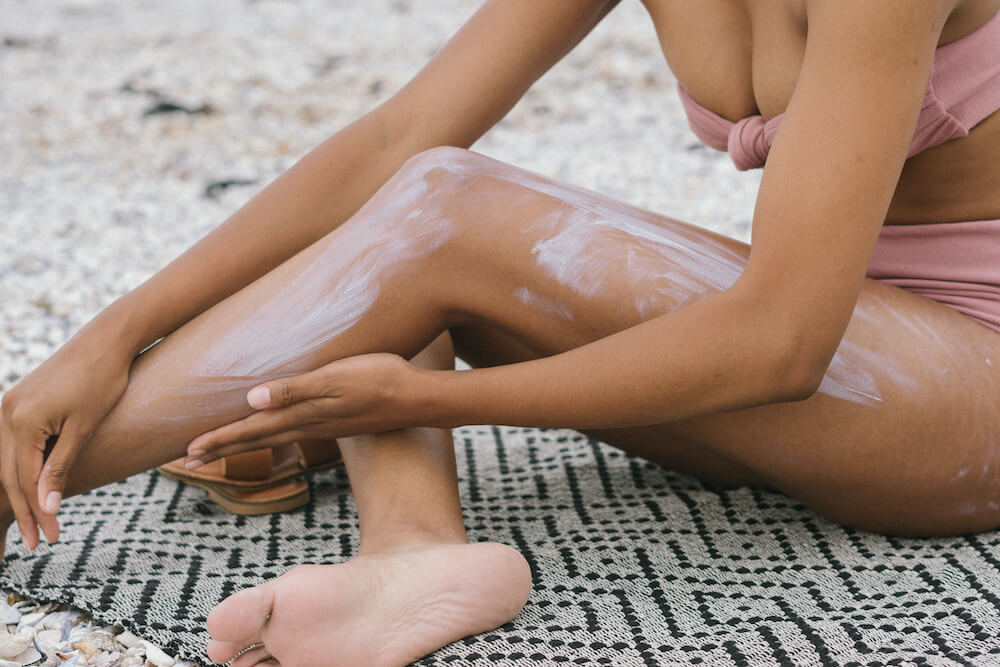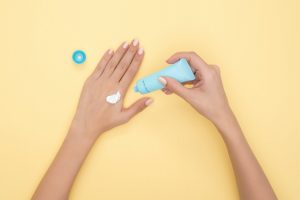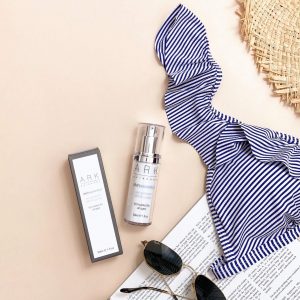02 Jun How to apply SPF
 SPF, sunscreen, sunblock – it doesn’t matter what name you use, what matters is that you wear it. Daily use of an SPF 15 sunscreen can reduce your risk of developing skin cancer and skin pre-cancer. It can also help prevent signs of premature ageing, including wrinkles, sagging and brown spots.
SPF, sunscreen, sunblock – it doesn’t matter what name you use, what matters is that you wear it. Daily use of an SPF 15 sunscreen can reduce your risk of developing skin cancer and skin pre-cancer. It can also help prevent signs of premature ageing, including wrinkles, sagging and brown spots.
But did you know there’s a right and wrong way to apply SPF? Read on to find out how to apply SPF and protect your skin from both UVA and UVB rays.
What is the correct way to apply sunscreen?
If you don’t use enough sunscreen or you apply it incorrectly, it’s not going to work. Scarily, this can leave you vulnerable to signs of premature ageing and even worse, skin cancer.
Firstly, apply sunscreen daily. Remember, your skin is vulnerable to the sun’s harmful UV rays all year round, not just in the summer. So make it part of your morning skincare routine.
Often, sunscreen needs time to soak into the skin before it’ll work. You’ll likely need to apply it 20-30 minutes before going outdoors. Check the back of the bottle for more info.
Secondly, make sure you’re using enough SPF. Apply a tablespoon of sunscreen to your face and around 1oz to the rest of your body. Dot your SPF directly onto your face and gently smooth it into your skin for quick absorption. It’s much easier and less messy than squeezing a big blob onto your palms.
Don’t forget to top up. Sunscreen doesn’t last all day. In fact, many sunscreens become ineffective after 90-120 minutes. Re-application is essential.
How to apply SPF: Which goes on first moisturiser or sunscreen?
This depends on who you ask. Search the internet and you’ll find there’s conflicting answers to this skincare question. If you want our opinion, SPF should be the last step in your skincare routine. Apply a thin layer of moisturiser and your SPF on top.
Wondering can I skip moisturiser and use sunscreen instead? You can, but we wouldn’t recommend it. Both have different jobs. Moisturiser is designed to penetrate and nourish the skin. Whereas SPF is designed to protect the skin and create a barrier. It seems more beneficial to use both, don’t you think?
Some moisturisers actually contain SPF, providing a 2-in-1 skincare solution. However, not all dermatologists recommend these products, as some suggest the additional ingredients could dilute the SPF. Others argue that some SPF is better than no SPF. We’d be inclined to agree.
Moisturise your skin and use an SPF of at least 15. No matter your age, skin type, whether you tan or burn. Remember, skin damage from sun exposure occurs over your lifetime. It’s not a matter of whether you’ve burnt your skin or not.
 Which SPF should I use?
Which SPF should I use?
As skincancer.org says ‘the best sunscreen is the one you are most likely to use.’ Of course, it does need to be broad spectrum (offers UVA and UVB protection) and have an SPF of at least 15 too.
You can either opt for a physical sunscreen or a chemical sunscreen:
Physical sunscreens contain ingredients like titanium dioxide or zinc oxide which physically block the sun’s rays before they penetrate the skin.
Chemical sunscreens contain ingredients that absorb UV rays before they damage your skin.
You also need to consider the Sun Protection Factor rating. This number tells you how long the sun’s UVB rays would take to burn your skin if you apply the sunscreen correctly, compared with the time it would take without sunscreen. So basically, wearing an SPF of 30 it would take you 30 times longer to burn than if you used no sunscreen – providing it was applied as directed.
If you’re spending most of the day indoors, an SPF of 15 will work adequately to protect your skin from the sun. Spend most of your days outside? Lucky you! You’ll likely need a higher SPF of at least 30 to keep your skin safe.
Either way, correct usage and re-application are key to protecting your skin all day long.

ARK Skin Protector SPF 30 – Buy Now
Can SPF break you out?
Unfortunately, those with acne prone skin may find that sunscreen causes breakouts. But this isn’t an excuse not to wear it! You still need to protect your skin. In fact, sun exposure can make acne worse and also darken your scarring, so SPF is an essential.
Our advice is to source an SPF suitable for your skin type. Look for a lightweight, oil-free formula that will be kind to your skin.
SPF for anti-ageing
As the saying goes, ‘nothing looks better in your fifties than sunscreen in your twenties.’ Use SPF daily and you’ll thank yourself later when you have fewer wrinkles and dark spots. Not to mention you’re giving yourself the best possible chance of warding off skin cancer.
It’s an easy and essential step to add into your skincare routine. SPF is your skin’s best friend. Don’t forget it!
Looking for a recommendation? I stock some of my favourite SPFs in my online store.

